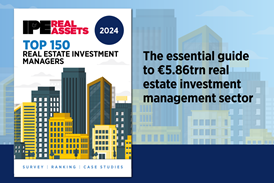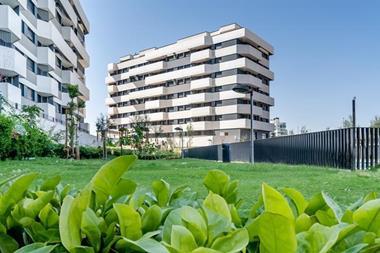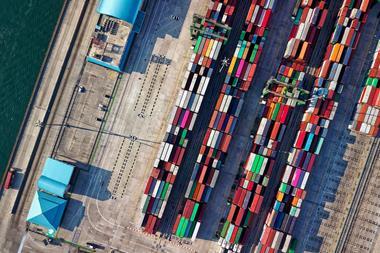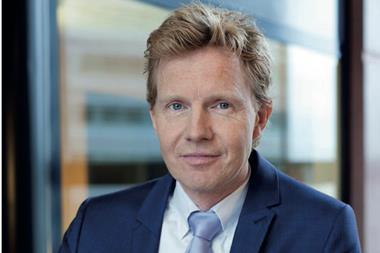ESG is becoming front and centre of infrastructure funds – and it’s not only about renewable energy. Christopher Walker reports
Infrastructure investment has obvious connections to ESG issues, whether in the form of renewable energy or the potential for economic regeneration from new projects. But it is only more recently that the asset class seems to have embraced its full potential in contributing to the sustainability agenda.
Earlier this year, DWS launched its debut ESG Infrastructure Debt Fund (EIDF). It is probably impossible to find an institutional infrastructure fund today without a sustainability strategy, but the DWS vehicle seemed to be the first debt fund to focus so explicitly on ESG.
Hamish Mackenzie, head of infrastructure at DWS, says the decision to launch the fund was in response to growing client demand. (Since announcing the fund in July, the wider DWS group been accused of ‘greenwashing’; the company has rejected allegations and declined to comment any further on the matter to IPE Real Assets.)
“In the last five years, ESG has evolved and now considerable capital is following the sustainability agenda,” Mackenzie says. “COVID and lockdown have given people a lot of time to rethink and prioritise. Sustainability is now more of a priority for all of us.”
Chris Leslie, head of sustainability at Macquarie Asset Management, speaks of “considerably increased demand from clients for ESG strategies across the investment spectrum.”
And Graham Matthews, CEO of Whitehelm Capital, goes further: “All infra investment will be ESG-compliant going forwards. These physically large assets by their very nature have a clear impact on environments and societies.”
It is this last reason that governments and regulators are now focused on sustainability in infrastructure. Investment consultancy Willis Towers Watson has launched its ‘Coalition for Climate Resilient Investment’ and is helping drive the initiative through the UN. Executive director Carlos Sanchez says: “Governments are now looking at how much national value, how much economic, social and ecosystem value, is at risk” and “regulators are making a positive contribution to the ongoing moves in the right direction”.
Leslie observes that “European regulators are leading the way” and, that “by introducing requirements for raising money that are ESG-related, they are going to the heart of any asset management business model”. Regulatory changes have “significant practical implications”, he says.
Sundeep Vyas, manager of the new DWS fund, says: “It was very important to us that the methodology we are using in the creation of this fund aligned with all the regulatory agencies.” This includes the recent changes in the EU taxonomy, the classifications of the Sustainable Finance Disclosure Regulation (SFDR), and the recommendations of GRESB.
These three regimes will increasingly dominate the future of infrastructure asset management. GRESB is the global ESG benchmark for real assets, while the EU taxonomy is a classification system for sustainable activities established in 2020 to “clarify which investments are environmentally sustainable, in the context of the European Green Deal”. The EU commission introduced the SFDR alongside their Taxonomy in March this year.
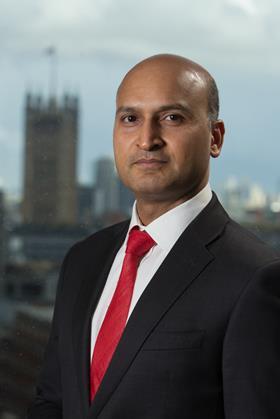
According to KPMG, SFDR “aims to bring a level playing field for financial market participants… on transparency in relation to sustainability risks, the consideration of adverse sustainability impacts in their investment processes and the provision of sustainability-related information”. All funds going forward are classified at different levels, with the most sustainable categorised as article nine funds. Vyas says his “fund will be at level eight”.
These labels will be important shibboleths for attracting green investors in future. Sanchez says: “Greenwashing is still a significant issue, with some companies…slapping on a label to appeal to a wider range of investors. [Now] greenwashing is being quickly flushed out, partly driven by greater scrutiny from investors… and the demand for improvements in disclosure and transparency.”
ESG: beyond renewable energy
Vyas says his new fund “is unique in that it is one product that picks up all the different aspects of ESG”, and not just the obvious one for the asset class – namely, energy transition.
Others agree with the need to move beyond this. “In some ways, wind and solar investments are old news,” says Leslie.
Stéphanie Passet, director of infrastructure debt at BNPP AM, says: “We are increasingly going beyond just energy transition in terms of sector selection. For example, data storage and biodiversity are new priorities.”
The DWS fund is targeting all European sustainability themed infrastructure sectors, including renewable energy, digital, energy-efficiency, utilities, clean-energy mobility, transportation and social infrastructure.
“Social infrastructure” is interesting, given its centrality to what is happening with the Biden infrastructure agenda in the US. Vyas says: “We are interested in social infrastructure… interaction with public bodies which are seeking to invest to benefit society.”
Whitehelm are also focused on this. “Where we have invested in specific social infrastructure, such as in Kindergartens in Norway, we sometimes take a successful concept and work to unroll it elsewhere,” Matthews says.
Leslie says: “There are at least three broad groups of ESG infrastructure strategies: first, those that to seek to exclude fossil fuels; second, those that deliberately target decarbonisation and energy transition, and, third, strategies that are focused on transformation of the underlying investments.”
Certainly, energy transition looks set to dominate. Chris Holmes, partner at Foresight, and co-lead for the JLEN environment infrastructure fund, is looking at “anything that helps decarbonising the economy, not just renewable energy”. For example, he says, “we also invest in refuelling stations for heavy goods vehicles”.
Then there is “transformation”, or persuading management. Mathias Reicherter, managing partner and CIO at Golding Capital Partners, says: “We believe we can add value by influencing managers. We have relationships across the spectrum and so can provide an overview where there is potential for improvement.”
Matthews adds: “If we can influence management to produce a better outcome, then I say, why not? We look to move them in the right direction over time. We sometimes have a 100-day implementation plan for change which we give to management.”
Matthews gives the example of SAREN, a Norwegian energy-from-waste company, where Whitehelm worked with the company to improve their recycling process.
“Active stewardship is a particular focus for us”, says Passet, who cites a utility where BNPP AM encouraged the phasing out of coal usage. But there are challenges related to asset class – “unfortunately, on the debt side we have less power than the equity side”.
Similarly, Mackenzie admits: “Equity investors do have a more dynamic relationship with management and are able to demand ongoing changes. For debt investors it is necessary to establish that relationship up front and it is not as easy after that to help ‘steer the ship’.”
The same is true in private equity, Leslie explains. “Transformation by shareholders can be easier to achieve in private equity than in public companies.”
But at least, Passet observes, “we do have access to a wide range of information and increasingly precise reporting”. BNPP AM say its push on diversity in boards is more of a challenge in unlisted private investments compared to publicly listed ones, but the intention is still there to apply it across the board.
Tellingly, Vyas says: “We will include inaccurate reporting on ESG as a cause for default… debt investors can have exactly the same amount of ESG information as equity investors and there are opportunities to make changes further out if borrowers return for a new or change to a loan.”
Certainly, the introduction of ESG-linked key performance indicators (KPIs) are creating change in private equity and private infrastructure debt. Vyas says: “Depending on individual borrower situation, we may consider specific KPIs or ESG targets.” Likewise, Hughes observes “we give managers a list of KPIs we expect to measure against”, while Leslie says Macquarie is “introducing sustainability KPIs to give management appropriate targets”.
The themes of transformation and energy transition will be central to the future of infrastructure strategies. “There is very strong potential for other ESG or sustainability-related strategies,” says Mackenzie. “Early-stage capital, often undertaken by higher-return investors in sectors such as renewable energy, has evolved over the last two decades towards almost bond-like returns for investments in brownfield wind and solar. It is the middle stage in this maturing process which particularly interests infrastructure investors…more mature technologies require larger volumes of more patient capital to take them to the next stage of growth.”
Reicherter agrees: “Infrastructure funds are changing and entering more into the private-equity space. Business owners are looking for longer-term partners rather than the three-to-four-year holding period common amongst private-equity investors.”
BNPP AM launched two infrastructure funds this year, and Passet says there could an emergence of funds dedicated to specific sectors. “Digital is interesting”, she says, “and obviously energy transition and hydrogen, in particular”.
Leslie agrees: “I think for Macquarie there are huge commercial opportunities in funding and financing energy transition and creating the strategies that focus on this.”


